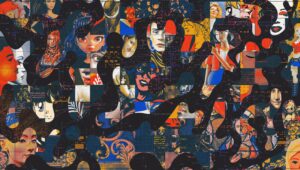I recently came across a fascinating topic that has been buzzing within the creative community: Are AI-generated images copyrighted? With the advancements in artificial intelligence and its ability to generate stunningly realistic visuals, it has raised questions about ownership and intellectual property. In this article, I’ll be exploring the intriguing world of AI-generated images and diving into the complexities of copyright laws surrounding them.
Learn more related articles:
- 8 Free AI Tools To Boost Your Daily Productivity
- 10 Must-Have AI Tools For Your Business Uses In 2023
- 10 Top AI Tools For Developers
- What Is Google Generative AI And Its Advantage
What are AI-generated images?
Definition and characteristics of AI-generated images
AI-generated images refer to images that are created or produced by artificial intelligence algorithms and systems. These images are not captured using traditional photography techniques but are instead composed or generated entirely by AI processes. AI-generated images can range from realistic depictions of objects and scenes to abstract and surreal compositions.
The characteristics of AI-generated images include their unique and often uncanny appearance, as the algorithms analyze vast amounts of data and learn to imitate human artistic styles or create entirely new visuals. These images are primarily generated by deep learning algorithms, which use neural networks to process and transform data to create visually appealing outputs.
Common examples of AI-generated images
AI-generated images have gained significant attention and popularity in recent years. One notable example is the use of AI algorithms to generate lifelike portraits that resemble famous historical figures or fictional characters. These so-called “AI portraits” have become popular on social media platforms and showcase the capabilities of AI technology in creating realistic images.
Another common example of AI-generated images is the use of deep learning algorithms to create visually striking abstract art pieces. These algorithms analyze patterns, shapes, and colors to produce unique and aesthetically pleasing compositions that challenge traditional artistic expressions.
AI-generated images are also commonly seen in applications such as virtual reality environments, video games, and animations. The ability of AI algorithms to generate realistic landscapes, characters, and visual effects has revolutionized the entertainment industry and enhanced the immersive experience for users.
Importance of copyright protection
The significance of copyright for creators
Copyright serves as a crucial form of protection for creators, including artists, photographers, and designers. It grants them exclusive rights over their original works, ensuring that they have control over how their works are used, reproduced, or distributed. With copyright protection, creators are incentivized to invest time, effort, and resources into their creative endeavors, as they can expect to be rewarded and recognized for their work.
In the context of AI-generated images, copyright protection becomes essential for the creators of the AI algorithms themselves. These developers invest extensive time and resources in designing and training these algorithms to generate sophisticated and visually appealing images. By providing copyright protection, their rights as creators are safeguarded, and they can continue to explore and innovate in the field of AI-generated images.
Protection of original works
Copyright protection applies not only to AI algorithms but also to the original works produced by the algorithms. While AI algorithms generate the images, they still rely on human input, such as training data, artistic direction, or customization. As a result, the final output can be considered a joint effort between AI technology and human creativity.
It is important to distinguish between the copyright protection granted to the AI algorithms themselves and the protection given to the images they generate. The algorithms may be protected as computer programs or inventions, depending on the jurisdiction, while the images can be subject to copyright protection as artistic works. This distinction recognizes the collaborative nature of AI-generated images and ensures that both the AI developers and the human creators are appropriately acknowledged and protected.

Copyright basics for AI-generated images
How copyright applies to AI-generated images
Copyright law protects original works of authorship fixed in a tangible medium of expression. In the case of AI-generated images, copyright applies to the images themselves as creative expressions captured in a fixed form, such as digital files or printed copies. This means that the person or entity that creates or owns the copyright in the image is generally entitled to the exclusive rights to reproduce, distribute, display, and create derivative works based on the image.
The process of determining copyright ownership for AI-generated images can be complex. While AI algorithms generate the images, creators may input the algorithms with specific training data or provide artistic direction. The question of authorship becomes crucial in determining copyright ownership. In some cases, the person who trained or directed the AI algorithm may be considered the author and owner of the copyright. However, in other scenarios, the AI algorithm itself may be deemed the author, leading to questions about the eligibility of copyright protection for AI-generated works.
Determining copyright ownership
To determine copyright ownership for AI-generated images, it is crucial to consider the level of human input involved in the creation process. If the AI algorithm merely reproduces existing works without significant human artistic contribution, it is unlikely to qualify for copyright protection. However, if the algorithm incorporates creative elements and produces original and distinctive images, copyright protection may be granted.
In cases where human input is involved in training or guiding the AI algorithm, the traditional principles of copyright ownership may apply. These principles typically grant copyright to the person who exercises the necessary skill, judgment, and creative choices in the creation process. However, the specifics can vary depending on the jurisdiction and the particular circumstances of each case.
Length of copyright protection
The length of copyright protection for AI-generated images follows the general principles of copyright law. In most jurisdictions, copyright protection lasts for the life of the author plus a certain number of years after their death. For anonymous or pseudonymous works, the duration may be calculated differently.
In the case of AI-generated images, where determining the author can be challenging, the duration of copyright protection could be determined based on the date of creation or the date of publication. The length of protection can vary globally, ranging from 50 to 70 years after the death of the author, or a fixed period of time from the date of creation or publication.
Challenges in copyrighting AI-generated images
Identifying authorship and ownership
The complex nature of AI-generated images poses challenges in identifying the authorship and ownership of these works for copyright purposes. Unlike traditional works where the creator is a human individual, AI-generated images involve a combination of human input and AI algorithms. This raises questions about whether the algorithm itself or the person who trained or directed the algorithm can be considered the author or copyright owner.
The determination of authorship becomes especially critical when it comes to enforcing copyright protection and claiming exclusive rights over the AI-generated images. Clear guidelines and legal frameworks are needed to define who should be credited as the author and who has the right to control and exploit the copyrighted images.
Determining fair use and transformative nature
Another challenge in copyrighting AI-generated images is determining when the use of these images qualifies as fair use under copyright law. Fair use allows for the limited use of copyrighted material without permission from the copyright owner, typically for purposes such as criticism, comment, news reporting, teaching, scholarship, or research.
The transformative nature of AI-generated images adds complexity to the fair use analysis. Since AI algorithms often create new and unique images, it can be argued that the use of these images for transformative purposes should be deemed fair. However, the specific criteria for determining the transformative nature of AI-generated images and the extent of fair use rights require further examination and clarification.
Potential impact on derivative works
AI-generated images can potentially have a significant impact on the creation of derivative works. A derivative work refers to a new work that is based on or derived from a pre-existing work, such as a modification, adaptation, or translation. However, the process of creating derivative works from AI-generated images raises questions about the ownership and originality of these derivatives.
If an AI-generated image is used as the basis for creating a derivative work, such as incorporating it into a larger composition or modifying it in some way, the ownership and copyright implications become more complex. Determining the rights and permissions required for creating derivative works from AI-generated images is an area that requires careful consideration and legal guidance.
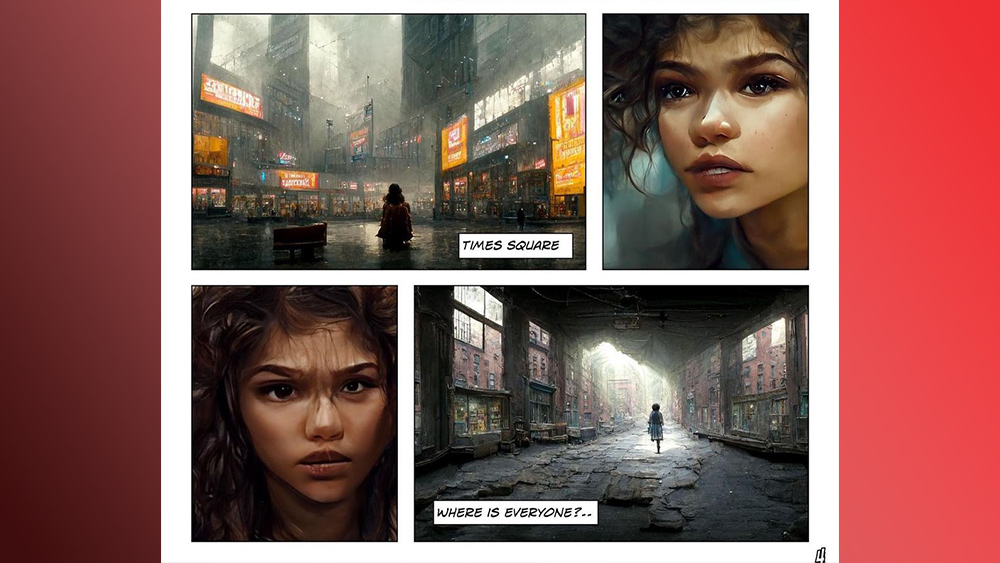
Current legal framework for copyrighting AI-generated images
Copyright laws and AI-generated images
The current legal framework surrounding copyright laws and AI-generated images varies across jurisdictions. Some countries have established specific provisions in their copyright laws to address the issues raised by AI-generated works, while others rely on existing principles and interpretations.
In the United States, for example, the Copyright Office has clarified that works produced by machines or animals without human authorship cannot be granted copyright protection. However, if a human author contributes creative input to the process, they may be eligible for copyright protection. This approach considers the collaboration between human and AI elements in the creation of AI-generated images.
In the European Union, the Copyright Directive includes provisions that recognize the potential copyright protection for works generated by AI. These provisions aim to strike a balance between protecting the rights of creators and incentivizing innovation in the AI field. They emphasize the importance of human involvement in the creative process while acknowledging the unique characteristics of AI-generated works.
Case studies and legal precedents
The legal landscape regarding copyrighting AI-generated images is still evolving, and case studies and legal precedents are emerging to shape the interpretation and application of copyright law in this context.
One notable case is the “Monkey Selfie” controversy, where a macaque monkey took a selfie using a photographer’s camera. The question of copyright ownership arose, as the image was not taken by the photographer but by the monkey itself. In this case, the courts ultimately ruled that the monkey did not have copyright ownership, as animals are not recognized as legal authors. This decision demonstrates the importance of human authorship and raises similar questions regarding the role of AI algorithms in creating original works.
Another case study involves the use of an AI algorithm to generate an image that resembled a well-known photograph. The photographer of the original image claimed copyright infringement, arguing that the AI-generated image copied his work. The case was settled out of court, pointing to the need for further discussion and clarity regarding the rights and limitations of AI-generated images.
Future implications and considerations
Evolving copyright laws and AI-generated images
As technology continues to advance, copyright laws will need to adapt to address the specific challenges posed by AI-generated images. The legal framework should provide clear guidelines for determining authorship, ownership, and rights over these works. It should also consider the evolving nature of AI algorithms and the potential for AI-generated images to become more sophisticated and indistinguishable from human-created works.
The future of copyright laws in relation to AI-generated images may involve the development of AI-specific legislation or the modification of existing copyright frameworks. Recognizing the collaborative nature of AI-generated images and emphasizing the protection of both the AI algorithms and human creators will be crucial in ensuring a fair and balanced approach to copyright protection.
Ethical concerns and societal impact
Alongside legal considerations, ethical concerns and societal impact should be part of the ongoing discussion surrounding copyrighting AI-generated images. The use of AI technology in the creation of images raises questions about authenticity, artistic integrity, and the potential for misuse.
There is a need to address issues such as deepfake technology, where AI algorithms can create highly realistic images and videos that can be used for deceptive purposes. Ensuring that copyright laws and regulations consider these ethical concerns is essential in maintaining trust in the authenticity and integrity of AI-generated images.
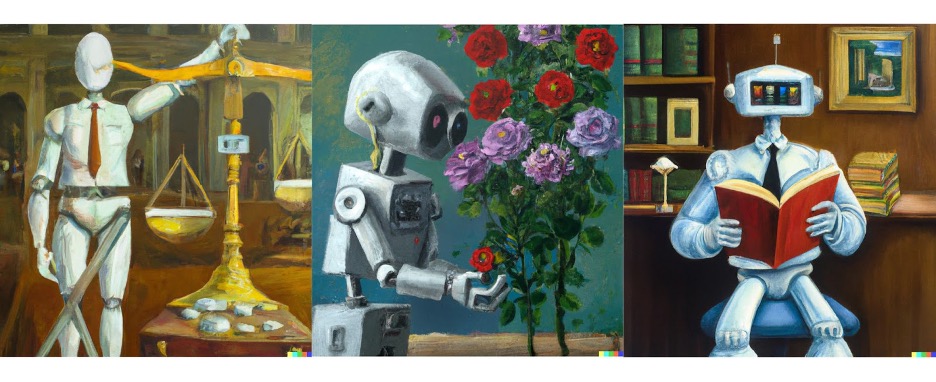
Alternative approaches for protection
Watermarking and visual identification techniques
One approach to protect AI-generated images is the use of watermarking techniques. Watermarks are typically digitally embedded marks or logos that are superimposed on an image to indicate the ownership and origin of the work. Watermarking can act as a visible deterrent to unauthorized use and provide a clear indication of copyright ownership.
Another alternative is the use of visual identification techniques, such as digital signatures or unique identifiers, embedded directly into the AI-generated images. These techniques can help establish a clear connection between the image and its rightful creator and serve as evidence of copyright ownership in case of disputes.
Licensing and attribution models
Implementing licensing and attribution models can also help protect AI-generated images while facilitating their authorized use. Creators of AI-generated images can choose to license their works under specific terms, allowing others to use the images in agreed-upon ways in exchange for appropriate attribution or compensation.
By adopting standardized licensing and attribution practices, creators and users of AI-generated images can establish clear guidelines and expectations, reducing the likelihood of copyright infringements and fostering a fair and sustainable ecosystem for these works.
Intellectual property rights and AI-generated images
Copyright vs. other intellectual property rights
While copyright primarily protects the expression of ideas in artistic or creative works, other intellectual property rights may also apply to AI-generated images, depending on the specific circumstances. These rights include trademarks and patents, which offer additional means of protection beyond copyright.
Trademarks may come into play when AI-generated images or logos are used as distinctive identifying marks for products or services. Registering the image as a trademark can provide exclusive rights to use and prevent others from using similar marks that may cause confusion in the marketplace.
Patents, on the other hand, protect new and useful inventions or technologies. If the AI algorithm used to generate the images incorporates novel and inventive techniques, it may be eligible for patent protection. This can allow the inventor to have exclusive rights over the algorithm and potentially its application in generating AI-generated images.
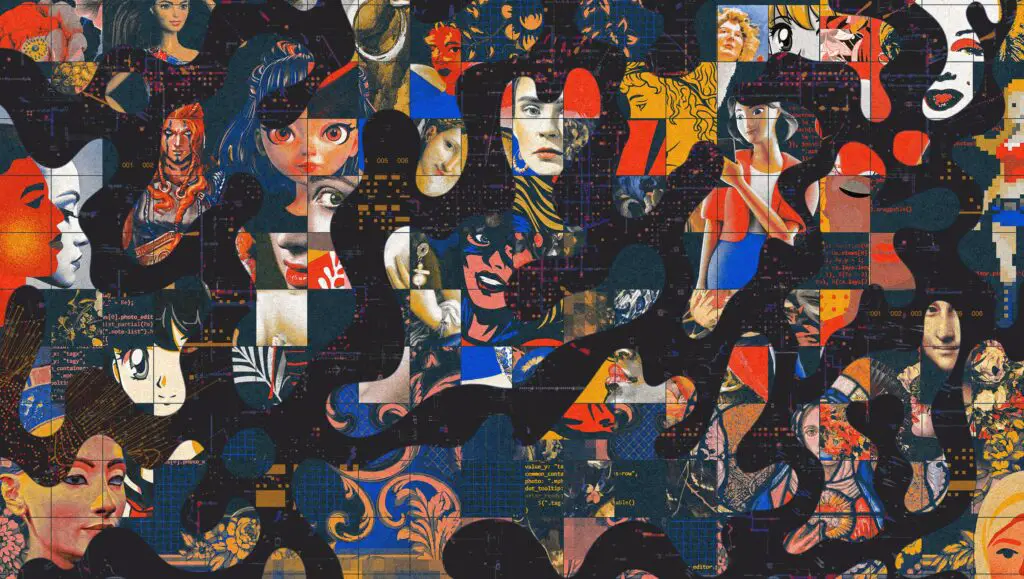
International perspectives on copyrighting AI-generated images
Variations in copyright laws globally
Copyright laws vary across jurisdictions worldwide, and this applies to the copyrighting of AI-generated images as well. Different countries have adopted different approaches and interpretations when it comes to recognizing the rights and ownership of AI-generated works.
Some countries have implemented specific legislation or guidelines to address the challenges posed by AI-generated images, while others rely on existing copyright frameworks and interpretations. These differences can create challenges in enforcing copyright protection globally and call for international collaboration and harmonization.
Efforts toward international harmonization
Recognizing the need for international cooperation and harmonization in copyright protection, various organizations and initiatives have been established. The World Intellectual Property Organization (WIPO), for example, works to develop international norms, treaties, and guidelines for intellectual property rights protection.
Efforts toward international harmonization can help address the complexities of copyrighting AI-generated images, ensuring that creators, users, and innovators around the world have a clear understanding of their rights and responsibilities. Collaboration on a global scale can also foster innovation and creativity in the field of AI-generated images, while respecting cultural and legal differences.
Conclusion
Copyright protection for AI-generated images is a multifaceted and evolving topic that raises important legal, ethical, and societal considerations. As AI technology becomes increasingly sophisticated and prevalent, it is crucial to establish clear guidelines and legal frameworks to protect the rights of both AI developers and human creators.
Determining copyright ownership for AI-generated images, understanding fair use and transformative nature, and addressing the potential impact on derivative works are some of the challenges that need to be addressed. The current legal framework, along with case studies and legal precedents, provide insights into the intersection of copyright law and AI-generated images.
Looking ahead, the future holds opportunities for evolving copyright laws, addressing ethical concerns, and exploring alternative approaches for protection. Watermarking, visual identification techniques, licensing and attribution models, as well as consideration of other intellectual property rights, can contribute to a comprehensive approach to copyright protection.
International perspectives and efforts toward harmonization are critical in establishing a globally consistent framework that supports innovation, creativity, and the responsible use of AI-generated images. Recognizing the need for ongoing discussions and adaptations, we can ensure that copyright protection keeps pace with the rapid advancements in technology and continues to foster a vibrant ecosystem for AI-generated images.
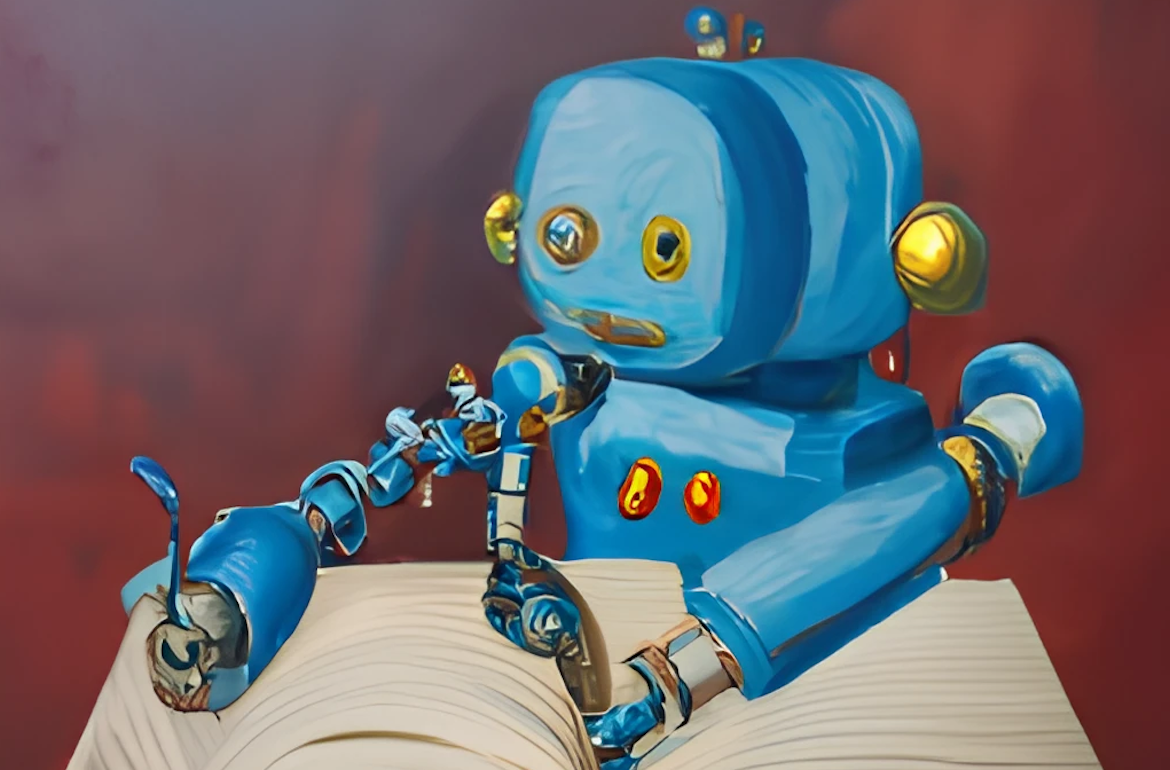
People also ask: Ai Generated Images Copyrighted
Are images generated by AI copyright free?
Images generated by AI may not always be copyright-free; it depends on the source and usage rights.
Can I legally use AI-generated art?
The legality of using AI-generated art depends on copyright laws in your jurisdiction and the specific circumstances.
Can I use AI-generated art commercially?
Commercial use of AI-generated art may have legal implications; consult with legal experts to ensure compliance.
